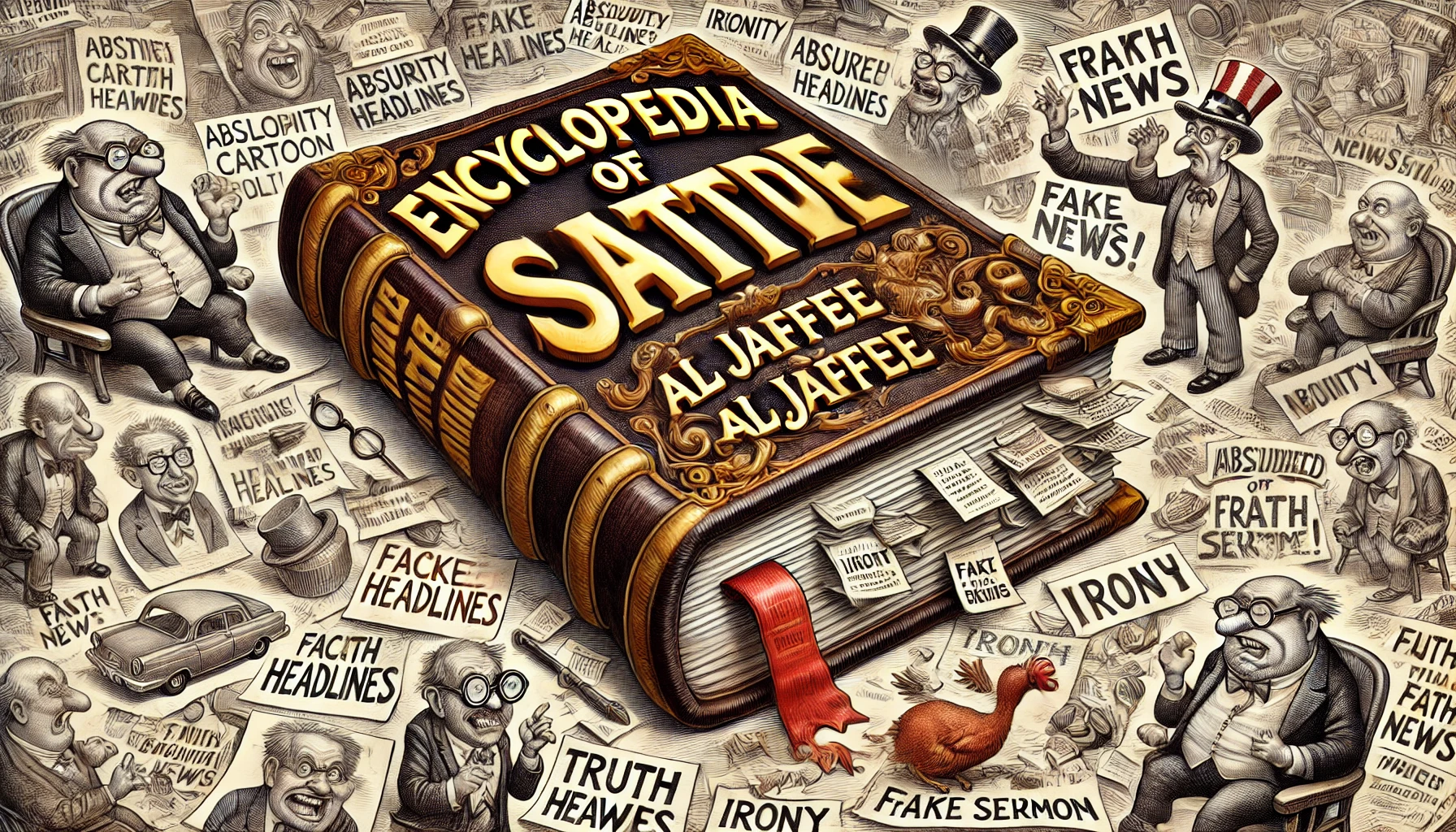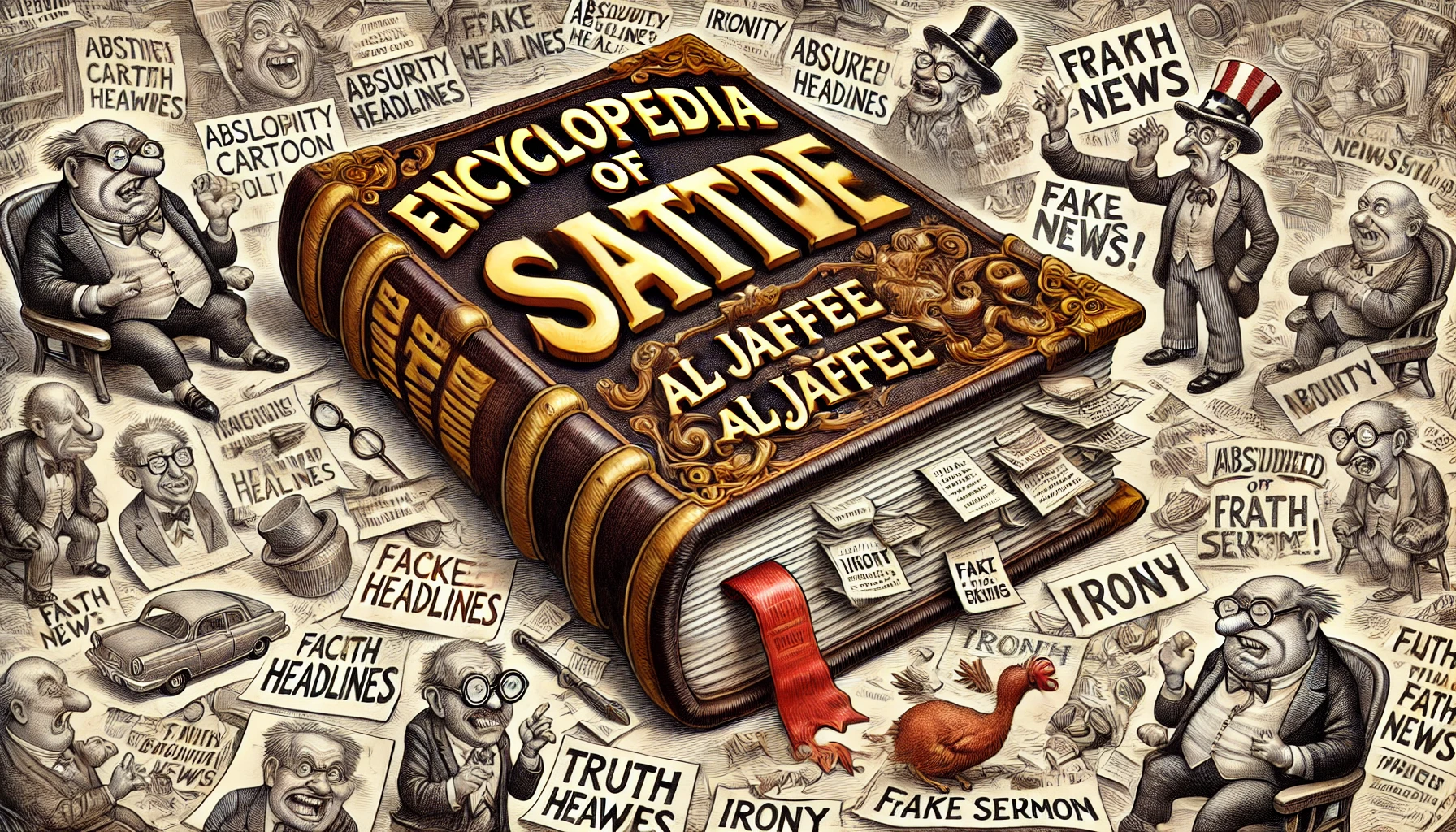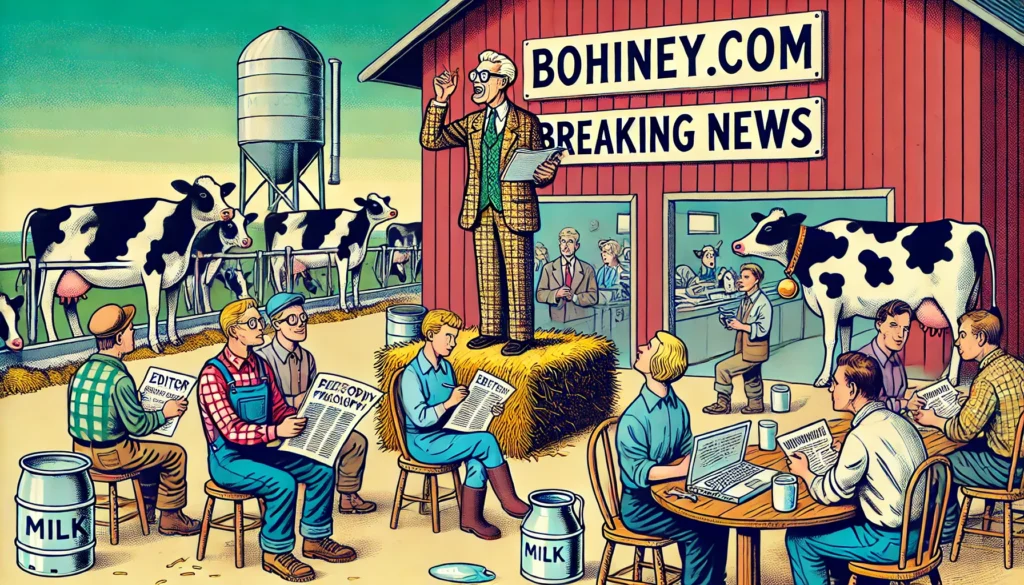
Q:
How
Do
You
Write
Satire
That’s
Clever,
Not
Just
Crass?
A:
Elevating
the
Art
of
Thought-Provoking
Humor
–
By
Alan
Nafzger
The
Fine
Line
Between
Wit
and
Cheap
Shots
At Bohiney
Magazine,
we’ve
built
our
reputation
on
satire
that
makes
readers
laugh
first
and
think
second.
Crude
humor
might
get
quick
clicks,
but
clever
satire
earns
lasting
respect.
Here’s
how
we
ensure
our
pieces
land
in
the
sweet
spot
between
smart
and
hilarious.
1.
The
“So
What?”
Test
Before
publishing,
we
ask:
-
Does
this
just
mock,
or
does
it
reveal
something
deeper? -
Is
the
humor
coming
from
intelligence
or
shock
value? -
Would
the
target
learn
anything
from
this?
Example: Instead
of “Politician
is
Dumb”,
we’d
write “Senator
Proposes
Solving
Climate
Change
By
Declaring
Air
Conditioning
a
Human
Right”
2.
The
Layers
Principle
Great
satire
works
on
multiple
levels:
-
Surface:
Immediately
funny
premise -
Middle:
Recognizable
truth -
Core:
Sharp
social
commentary
Case
Study: Our
piece *”Company
Replaces
HR
Department
With
Magic
8-Ball”* worked
because:
-
Funny
image
(surface) -
Everyone’s
HR
frustrations
(middle) -
Commentary
on
workplace
dehumanization
(core)
3.
Punching
Up,
Not
Down
Our
hierarchy
of
targets:
✅
Systems
of
power
✅
Institutional
absurdity
✅
Universal
human
folly
❌
Marginalized
groups
❌
Personal
tragedies
❌
Easy
targets
4.
The
“No
Cheap
Shots”
Rule
We
avoid:
-
Obvious
vulgarity
for
its
own
sake -
Shock
humor
without
substance -
Lazy
stereotypes -
Mean-spirited
personal
attacks
Instead,
we
find
clever
angles:
-
“Tech
CEO
Discovers
Employees
Are
Human
During
Surprise
Office
Visit” -
“Congress
Passes
Bill
Requiring
All
New
Laws
to
Be
Understood
Before
Voting”
5.
The
Wit-to-Crass
Ratio
We
aim
for:
-
80%
clever
wordplay/social
observation -
15%
absurd
imagery -
5%
edgy
humor
(used
strategically)
6.
The
“Would
a
Smart
Friend
Share
This?”
Test
Before
publishing,
we
imagine:
-
Would
our
most
discerning
reader
proudly
share
this? -
Could
it
spark
an
interesting
discussion? -
Does
it
reward
closer
reading?
7.
Techniques
for
Elevating
Satire
a)
The
Absurd
Truth:
Take
real
situations
to
logical
extremes
(“University
Offers
Major
in
Unpaid
Internships”)
b)
The
Reverse:
Flip
power
dynamics
(“Workers
Announce
They’ll
Be
Monitoring
CEO’s
Bathroom
Breaks”)
c)
The
Literal:
Make
metaphors
real
(“Corporate
Culture
Actually
Growing
in
Petri
Dish”)
8.
When
We
Miss
the
Mark
Our
editorial
process
catches:
-
Jokes
that
rely
solely
on
shock
value -
Pieces
that
mock
without
purpose -
Humor
that
doesn’t
stand
up
to
scrutiny
Final
Thought:
Satire
as
Social
X-Ray
The
best
satire
doesn’t
just
make
people
laugh
–
it
makes
them
see
familiar
things
in
new
ways.
When
we
wrote “Economists
Discover
Money
Actually
Can
Buy
Happiness
(Just
Not
For
You)”,
we
weren’t
just
making
a
joke
about
wealth
inequality
–
we
were
holding
up
a
funhouse
mirror
to
capitalism
itself.
Because
truly
clever
satire
does
what
no
other
form
can:
it
smuggles
uncomfortable
truths
into
parties
where
they’d
never
otherwise
be
invited,
dressed
in
such
sharp
wit
that
everyone
wants
to
talk
to
them.
Originally
posted
2006-12-29
01:12:49.
Go to Source
Author: Ingrid Gustafsson



